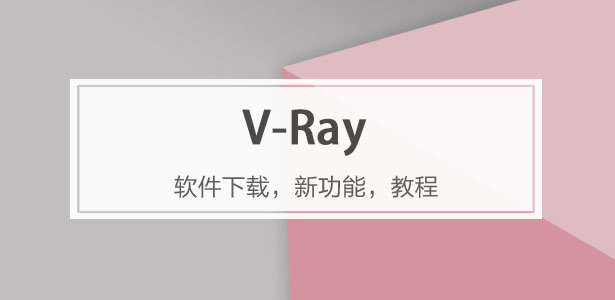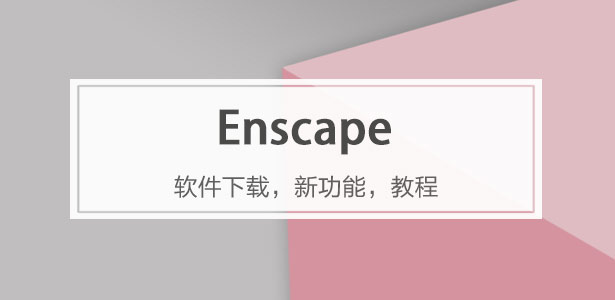
下載app免費領取會員




設計單位? 察社辦公室
項目地點? 北京通州
建成時間? 2024年11月
建筑面積? 334平方米
撰文? 成直
地方現實的流變
The Shifting Reality of Place
疫情三年改變了很多人的生活工作習慣,這座房子的主人也是其中之一。2023年,他們決定搬回村子里的父母家,在那里重建一座房子。新房需同時允許三代人居住,又可以滿足居家辦公條件。若干年后,他們可能定居于此,不再需要為生計在城市里奔波。
The three-year pandemic reshaped the way people live and work, and the owner of this house was no exception. In 2023, they decided to return to their parents’ home in the village and rebuild a house that could accommodate three generations while also serving as a home office. In the years to come, they may settle here permanently, no longer needing to commute between the city and countryside for work.


一如既往,這個設計的初衷是面對真實問題。它無意擁抱抽象的“傳統觀念”或者“審美趣味”。Kenneth Frampton在其書中寫道:“直面一個地方的固有問題,這會變成批判地域主義發展的契機”。同樣的,這也是我的興趣。
As always, the intent of this design is to address real-life challenges. It does not aim to embrace abstract notions of “tradition” or aesthetic conventions. Kenneth Frampton wrote that confronting a place’s inherent issues can become an opportunity for the development of critical regionalism. This idea aligns with my own interests.
今天習慣現代生活的人們,對傳統院落的詬病往往集中在缺乏清晰的氣候邊界,房舍互相分離。通常的更新方式是把房子連接在一起,多表現為把院子變成室內,或者增加外廊。但院子封住的結果是一個巨大間接采光且缺乏通風的室內,而外廊隔開院子和內室,人們無法直接接觸陽光和新鮮空氣;又或者,所有房間像糖葫蘆一樣串起來,這又可參照到17世紀以前的歐洲住宅,空間均質而缺乏對隱私的關照。因此,如何兼顧氣候邊界,通過性以及對公共私密的合理布局,這是設計的目的。而我相信除此以外,每個具體的場所和他們的主人,也都攜帶著各不相同,需要被發現的信息。
For those accustomed to modern living, criticism of traditional courtyard houses often focuses on their ambiguous climatic boundaries and the separation of living spaces. The common approach to renovation is to link previously detached rooms, often by adding a roof on top of the yard, or adding exterior corridors. The roof or those corridors, however, create barriers between the courtyard and interior rooms, preventing direct exposure to sunlight and fresh air. Alternatively, the rooms may be arranged in a linear enfilade, reminiscent of pre-17th-century European homes—an efficient yet homogeneous layout that lacks privacy. The goal of this design was to balance climatic adaptability, spatial permeability, and the relationship between public and private spaces. Beyond that, I believe that every site and its inhabitants carry unique and often overlooked narratives waiting to be discovered.







所以一切的開始,源于具體的場地
A House Rooted in Place
項目所在的通州地區,仿佛制定了比北京其他郊區縣都要嚴格的建設要求。譬如宅基地上只能建設一層建筑物,檐口限高3米。也因此,西筏村平坦而開闊。鄰里間,即便是近些年改造過的院子,依然大致遵循合院的規制,匍匐于大地。
The project is located in Tongzhou, Beijing, where building regulations appear to be stricter than in other suburban districts. For instance, residential plots are limited to single-story structures with an eave height of no more than 3 meters. As a result, Xifa Village remains flat and expansive. Even the more recently renovated courtyards continue to follow the traditional heyuan (courtyard house) layout, lying low against the vast landscape.
第一次拜訪現場是個雨后的下午。700平方米的院子,襯托已有房舍低矮而天空廣大。即便頭頂上還有陰云密布,屋檐卻擋不住遠處的藍天和日光。這種通透舒闊感也是甲方最早向我表達的對未來房子的期待。
My first visit to the site was on a rainy afternoon. The 700-square-meter courtyard made the existing house appear small beneath the immense sky. Despite the heavy clouds overhead, the eaves could not block the distant blue sky and sunlight. This sense of openness and spatial fluidity was the first thing the client expressed as their vision for the new house.


針對700平方米的院子占地,又因為預算有限,我們預計要建設一座單層300平方米的房子。房子少,院子大,它將是傳統農村院落的變形和演繹。
Given the site’s generous size and the project’s budget constraints, we planned a single-story house with a footprint of 300 square meters. A house with a modest volume and a spacious courtyard—this would be both an adaptation and a reinterpretation of the traditional rural courtyard dwelling.







十字交叉之家:盡端或者循環
House of Cross: A Balance of Termination and Circulation
首先把不同方向的房子首尾相連在一起。在維持庭院尺度的前提下,廂房被合并到一邊,進深增加并離開邊界,在背對院子一側閃出另一個窄長的院子。北側的正房遵循同樣的方式向南移動并閃出后院。不同方向的房舍都擁有了雙側采光面,整個院子也因此擁有穿透的視野。
The house is conceived as an interwoven structure, its wings extending in different directions and joining at their ends. To maintain the proportions of the central courtyard, the side wings were consolidated and pulled away from the perimeter, creating a narrow secondary courtyard at the rear. Similarly, the north-facing main hall was shifted southward, opening up a backyard. Each wing now enjoys dual-sided natural light, while the entire courtyard benefits from uninterrupted sightlines.









建筑的山面出頭,頂向邊界。從總圖上看,環形建筑輪廓變成了十字交叉的圖形。均質的空間,產生了若干盡端。姥姥姥爺、爸爸媽媽、小朋友、來訪的客人,那些盡端容納了大家的臥室。姥姥姥爺分開就寢,像多數老年人,更希望各自擁有獨立的房間。在獨屬于他們的盡端,也可以產生這種細分的房間。如果把這些盡端看作伸展的觸角,連接它們建筑的身體部位,被拉長和隱隱地切成段落,容納不同的公共職能。這也觀照到多代人共同生活的日常場景。人們在這些若即若離的房間中穿梭,祖孫滿堂或者核心家庭的互動都能得到響應。
The gabled ends of the roofs extend outward, reaching toward the site’s boundaries. From above, the house forms a cross-like configuration. The spatial arrangement is evenly distributed, creating a series of terminal points—private rooms for the grandparents, parents, children, and visiting guests. The grandparents, like many elderly couples, preferred separate sleeping quarters, and the extremities of the house allowed for this subtle division. If these terminal points are seen as extended limbs, then the core of the house—its connective spaces—is elongated and subtly segmented, accommodating various public functions. This arrangement reflects the rhythms of multi-generational living, offering both proximity and separation as needed. People move through these spaces, shifting between moments of family gathering and more private interactions.








就像連成一片的蘑菇
A House Like a Cluster of Mushrooms
為了獲得更通透開闊的視野,建筑外墻結構向屋脊方向移動。不同方向的結構匯聚,變成十字交叉點上的剪力墻桶。房子像蘑菇一樣中心支撐向四面挑出。邊界解除了結構的束縛,幕墻讓室內室外合為一體。甚至因為十字交叉的格局,景深從遠處一層一層拉近,院子、房子、院子;人們身處公共區域中,生活場景層疊展現。
To create a sense of spatial openness, the building’s structural framework recedes toward the roof ridge. Structural elements from different directions converge at the shear wall cores, forming the cross-shaped structural anchor. The house, much like a mushroom, is supported at its center while its eaves extend outward in all directions. Freeing the perimeter from structural constraints allows the fa?ade to dissolve, merging the interior and exterior. The cross-shaped layout creates a view that moves from near to far—courtyard, house, courtyard again—revealing overlapping scenes of daily life.








玻璃幕墻上口框材如果直接做在檐梁的底部,室內就獲得了兩側3米多高的通透開口。這一方面讓家人缺乏庇護感,另一方面也要付出能耗上的代價。我們把檐梁下吊到2.4米的高度,檐口就像蘑菇傘邊卷下來。這讓室內既維持了一個舒適的高度,又讓人們不至于被袒露在天地之間。艷陽高照或是大雨傾盆,坐在窗前的人們就像躲在蘑菇下面的小蟲,得以安頓。
If the upper frames of the glass fa?ades were aligned directly with the eaves, the interiors would have received over 3 meters of vertical glazing. However, this would have left the occupants feeling exposed and significantly increased energy consumption. Instead, we lowered the eaves beams to 2.4 meters, allowing the eaves to extend downward like the edge of a mushroom cap. This solution maintains a comfortable ceiling height while also creating a sense of shelter—whether under the bright sun or during heavy rain, those sitting by the window feel like small creatures nestled beneath a mushroom cap, protected and at ease.
對內通透,對外則相反。建筑的唯一外立面正好也是出頭的眾多盡端空間之一。入口灰空間,順著坡屋頂延續而下。且配合街道與地塊的斜坡,磚砌院墻向內疊澀。整個建筑體量匍匐在路邊。
While the house remains open and transparent toward the courtyard, its outward-facing fa?ade is quite the opposite. The only exterior-facing elevation is itself one of the terminal spaces. The entrance semi-outdoor space extends downward along the sloping roof, while the brick perimeter wall, responding to the outward slope of the street and site, steps inward as it rises. As a whole, the building sits low and unassuming against the roadside.





構成十字交叉之家的要素有三,第一是四向出頭的交叉建筑體量,以及由此帶來公共私密空間的分離;第二是剪力墻內收,通過挑梁支起的傘狀屋頂,本屬于“結構之內”的空間轉移到“結構之外”和“結構之間”;第三是通過屋頂和檐口高度上的變化,在天光和日常的穿梭中,建筑為主人拉回的安頓感。
Three key elements define the Cross House: first, the cross-shaped volume, which naturally delineates public and private spaces; second, the recessed shear walls and cantilevered roof, shifting enclosed structural space outward and between structural elements; and third, through the interplay of roof and eave heights, the architecture creates a sense of settling during daily life.”



設計圖紙 ▽





完整項目信息
項目名稱: 十字交叉之家 – 一朵屋檐下的安頓與穿梭
項目類型:建筑 / 室內
項目地點:北京通州區于家務鎮西垡村
設計時間:2023年10月—2024年1月
建設時間:2024年3月—2024年11月
用地面積:650平方米
建筑面積:334平方米
設計單位:察社辦公室
事務所網站:chaoffice.info
主創建筑師:成直
設計團隊:邵金瑞
結構:高雪梅
施工:張友江
造價:160萬
攝影:朱雨蒙
版權聲明:本文由察社辦公室授權發布。歡迎轉發,禁止以有方編輯版本轉載。
投稿郵箱:media@archiposition.com
本文版權歸腿腿教學網及原創作者所有,未經授權,謝絕轉載。

上一篇:政策新聞 | 廣東省住建廳關于紅嶺教育集團(大鵬校區)建設項目等廣東省2025年度第一批二星級綠色建筑標識項目的公示
下一篇:BIM建筑|廣州中大門城市之丘:產業園變非標商業 / 豎梁社懸亮子工作室






推薦專題
- 建筑賞析|當歷史建筑邂逅能效,就有了一場打破常規的“改造趣談”
- 建筑賞析|織夢、奇遇與探索——sômthin‘else另有奇物
- BIM建筑|深圳園博園花卉館公廁設計 / REFORM重塑建筑
- BIM建筑|萬寧麓灣水集水鳥公園亭 / 口口建筑
- BIM建筑|gad新作:中國節能·太湖首座
- BIM建筑|阿科米星作品:刷新立面,快易名商靜安科技中心
- BIM建筑|致舍景觀新作:華潤三亞觀嵐花園
- BIM建筑|在建方案︱北師香港浸會大學二期校園 / Aedas+DSARD
- BIM建筑|廣州中大門城市之丘:產業園變非標商業 / 豎梁社懸亮子工作室
- BIM建筑|察社辦公室新作:十字交叉之家,一朵屋檐下的安頓與穿梭



































